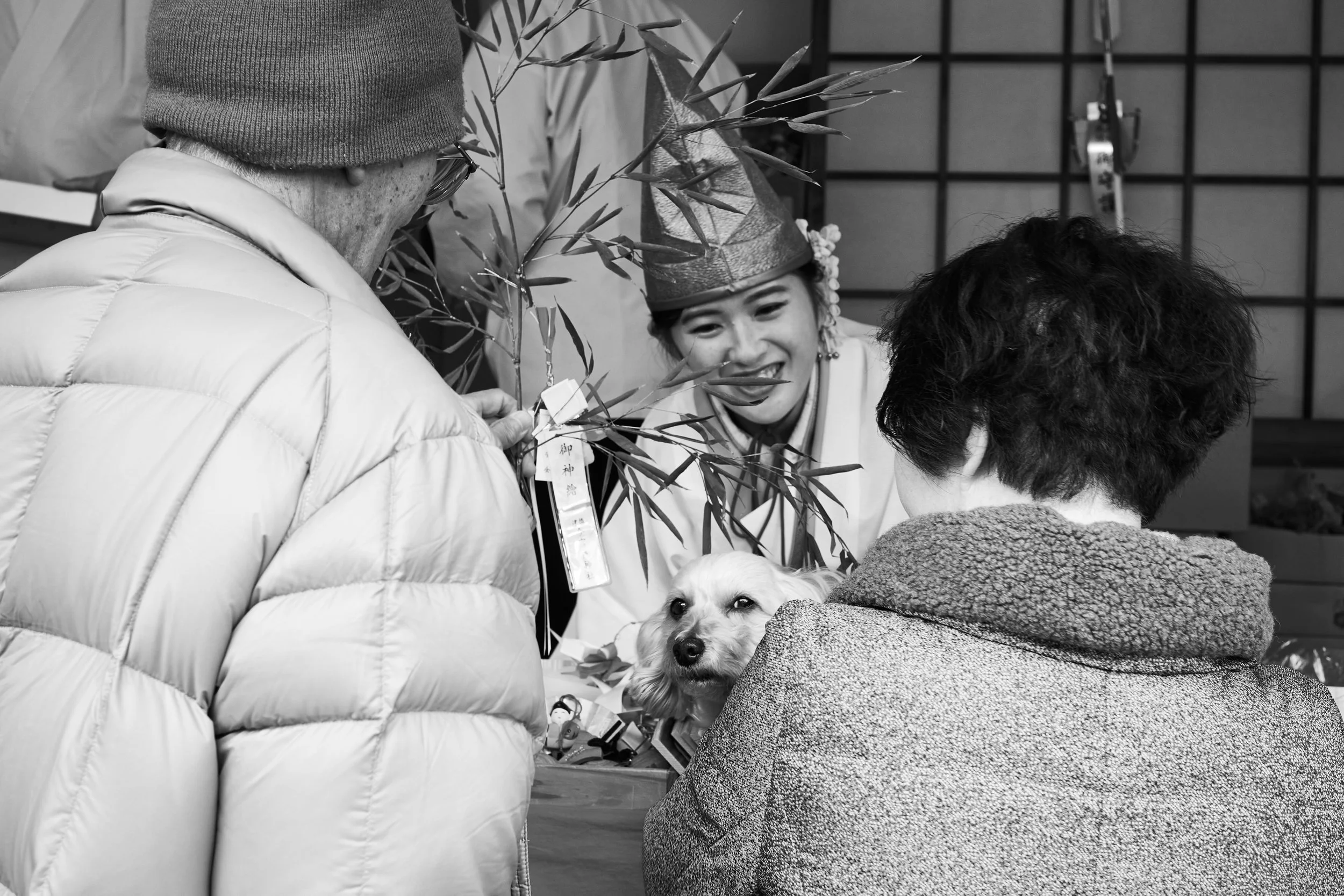For Ebisu's sake
Every year on January 9th, 10th and 11th, the Matsuri Toka Ebisu dedicated to the Shinto god Ebisu takes place all over Japan and more particularly in the Kansai region. During these 3 days, several millions of people will go to the Imamiya Ebisu shrine of Osaka and try to get the favors of the Ebisu god who will help their business to be flourishing and money to come in abundance.

The eastern entrance door of the sanctuary decorated with a painting that change every years.

A person walking with a Sasa (Bamboo grass) in the sanctuary.

A seller of lucky charms at the effigy of the god Ebisu in his stand outside of the Shrine.

Money offered at the Shrine during the first prayer. Every visitor throws money into the main building of the shrine, during the first greeting to the god Ebisu.

A person throwing away his old lucky charms before starting his journey in the sanctuary.

A group of people praying in front of the main shrine, one of them has the tattoos « No God, No Master" on her legs.

A group of Fukumusume (Good fortune girls) going to their post to sell good luck amulets to visitors.

Two people knocking on the dome "Ura Mairi" to call the god Ebisu to listen to their prayers.

A salaryman taking a Sasa (bamboo grass) from a staff member of the Shrine.

A security guard directing the crowd with a megaphone.

A salaryman trying to make his way through the crowd.

A Fukumusume (Good Fortune Girl) selling some good luck charms.

A member of the Shrine raking the money offered by the visitors.

A person walking in the Shrine with a Sasa (bamboo grass) in her hand.

A group of people trying to make their way through the crowd.

A Fukumusume talking with visitors during the sale of good luck amulets.

Business cards pasted on the dome "Ura Mairi" to attract the good favors of the god Ebisu.

A person posing with the ornamental amulet she bought in front of the main shrine building.

A person throwing away his old lucky charms before starting his journey in the sanctuary.

Two security guards blocking access to the main shrine building to manage the crowd.
